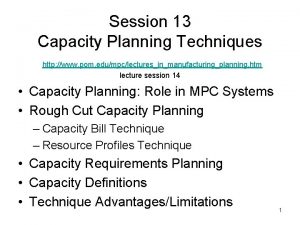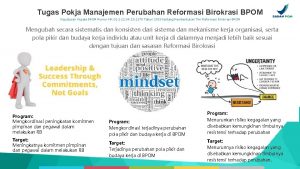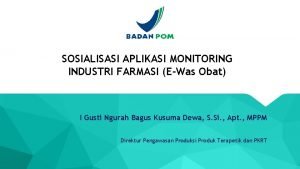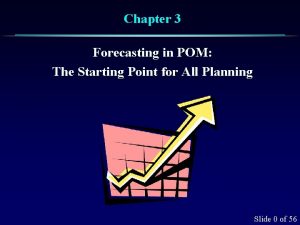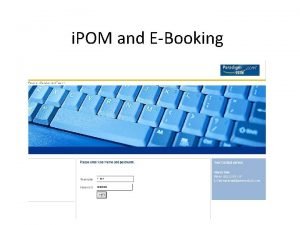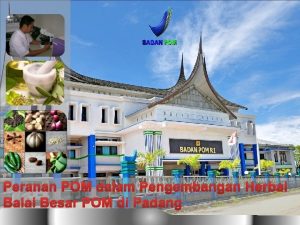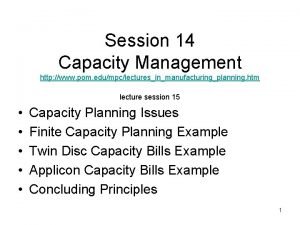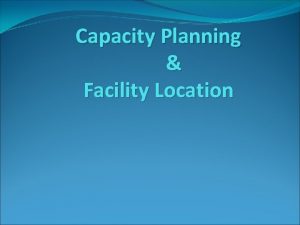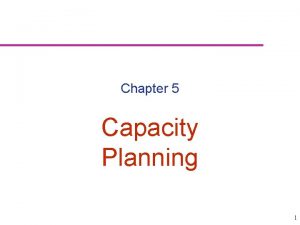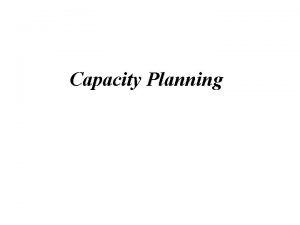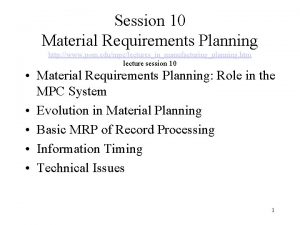Session 13 Capacity Planning Techniques http www pom












- Slides: 12

Session 13 Capacity Planning Techniques http: //www. pom. edu/mpc/lectures_in_manufacturing_planning. htm lecture session 14 • Capacity Planning: Role in MPC Systems • Rough Cut Capacity Planning – Capacity Bill Technique – Resource Profiles Technique • Capacity Requirements Planning • Capacity Definitions • Technique Advantages/Limitations 1

Capacity Planning in the MPC System 2

Capacity Bill Example Sarah Reed. master scheduler at Walnut Hill, has developed a master production schedule for the XYZ boom box: Period 1 MPS 450 2 300 3 625 Dept. Circuit Board Assembly Capacity 130 160 4 890 Hours per Unit of End Product. 2. 3 The XYZ is fabricated in several departments, but the circuit board department and assembly areas are the potential bottlenecks. Prepare a rough-cut analysis of capacity for the MPS. 3

Problem 4. Sarah Reed Period: MPS: 1 450 2 300 3 625 4 890 Capacity Requirements Capacity Bill (. 2 hr/unit) (. 3 hr/unit) Dept 1 Circuit Board 90 Assembly 135 2 60 90 3 4 125 178 187. 5 267 Capacity Available 130 hr/per. 160 hr/per. Requires: MPS, setup time and run time information from product routing file. 4

Resource Profile Example Determine the capacity requirements in all work centers at Erben Fabricators using the MPS, resource profile, product structure, and lead time information given below for product Z and all of its components. (Assume all usages are one and that a new setup must be made in each period at each work center. ) Product Z MPS Part Z M N O P Work center 201 202 203 1 10 Period 2 3 4 5 20 15 10 15 Product Z resource profile Setup hours Run hours/unit 8. 0 1. 5 5. 0 1. 0 3. 0 2. 0 1. 0 0. 5 Planned Lead time 0 periods 1 period 2 periods 3 periods 5

Resource Profile Solution Requires: MPS, setup and run time information from the product routing file, and lead time information. 6

Capacity Requirements Planning (CRP) Example The Kuczma Company makes sign mounts for commercial customers. One product is the H mount which is made up of a painted surface on both sides of a wooden H frame. The H mount is put together in final assembly. The surfaces are painted in the paint shop, and frame is made in the frame shop. Kuczma wants to estimate the H mount capacity needs for next five periods in final assembly, the paint shop, and the frame shop. Operation Mount assembly Fabricate H frame Paint surfaces Work Center Final Assembly Frame Shop Paint Shop Setup Time 2 hours 3 hours 4 hours Run time 1. 0 hours 0. 5 hours 0. 4 hours 7

Capacity Requirements Planning (CRP) Example (continued) 8

Capacity Requirements Planning (CRP) Example (continued) * In hours 9

Capacity Requirements Planning (CRP) Example (continued) Capacity Requirements Dept H Mount Assy H Frame Painted Surface 1 17 28. 5 24 Period 2 3 22 22 0 18 24 24 4 22 18 24 5 22 0 0 6 0 0 0 Note: 28. 5 = 3 + 0. 5(15) + 3 + 0. 5(30) Requires: Planned order and schedule receipt information from the MRP system, and setup and run times from the product routing file. 10

Capacity Definitions • Required capacity: Estimated using capacity planning techniques • Rated capacity: Available capacity considering staffing equipment capabilities • Demonstrated capacity: Actual (or realized) capacity based on actual production output 11

Capacity Planning Techniques: Pros and Cons Pros Easy to use Minimal computational requirements Consider product mix Capacity Bills Cons Doesn’t consider lead times, inventory information, or gross-to-netting Less accurate Resource Profiles Doesn’t consider inventory information or gross-to- netting Easy to use Minimal computational requirements Considers lead times Less accurate Consider product mix Capacity Requirements Planning Considers: gross-to-netting, Requires MRP system, Time-phased Inventory information, records, Extensive computational lead times requirements More accurate 12 Considers product mix

